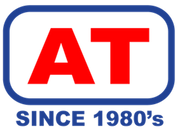Fiber Laser Troubleshooting Guide: Solve Common Issues in Minutes
Published by Abdul Traders - Your Trusted Partner in CNC Automation & Fiber Laser Solutions
Fiber laser machines are precision instruments that require proper maintenance and quick problem resolution to maintain optimal performance. As Pakistan's leading distributor of fiber laser consumables from renowned manufacturers like RayTools, Raycus, and Max Photonics, we've compiled this comprehensive troubleshooting guide based on the most common issues our customers face.
Problem #1: Nozzle Clogging and Poor Cut Quality
Symptoms:
- Rough or incomplete cuts
- Excessive dross formation
- Inconsistent cutting speed
- Visible sparks or unusual sounds
Step-by-Step Solution:
Step 1: Safety First
- Turn off the laser system completely
- Allow the cutting head to cool down (minimum 10 minutes)
- Wear safety gloves and protective eyewear as recommended by OSHA safety guidelines
Step 2: Inspect the Nozzle
- Remove the nozzle carefully using appropriate tools
- Check for visible debris, metal particles, or carbon buildup
- Examine the nozzle orifice for deformation or damage
Step 3: Clean or Replace
- For minor buildup: Use specialized nozzle cleaning solution and soft brush
- For severe damage: Replace with genuine RayTools nozzles for optimal performance
- Ensure proper torque when reinstalling (hand-tight plus 1/4 turn)
Step 4: Check Gas Pressure
- Verify assist gas pressure matches material specifications according to Laser Institute of America standards
- For mild steel: 0.8-1.2 bar oxygen
- For stainless steel: 12-16 bar nitrogen
Prevention Tips:
- Replace nozzles every 8-12 hours of cutting time
- Use high-quality assist gases from certified suppliers
- Regular cleaning schedule prevents major clogs
Problem #2: Lens Contamination and Beam Quality Issues
Symptoms:
- Reduced cutting power
- Uneven cut edges
- Frequent nozzle burning
- Visible spots or scratches on protective lens
Step-by-Step Solution:
Step 1: Lens Inspection
- Remove the protective lens housing carefully
- Inspect lens surface under good lighting
- Look for scratches, burns, or contamination spots
Step 2: Proper Cleaning Technique
- Use only lens-grade cleaning solution as specified by Edmund Optics cleaning guidelines
- Clean in circular motions from center outward
- Use lint-free optical wipes only
- Never use compressed air directly on lens
Step 3: Alignment Check
- Ensure lens sits perfectly flat in housing
- Check for proper spacing and gasket condition
- Verify beam path alignment using precision alignment tools
Step 4: Replacement When Necessary
- Replace if scratches are visible
- Replace if cleaning doesn't restore clarity
- Always use genuine replacement lenses from trusted manufacturers like RayTools for optimal beam quality
Maintenance Schedule:
- Daily: Visual inspection
- Weekly: Thorough cleaning following ISO 14644 cleanroom standards
- Monthly: Complete alignment check
Problem #3: Cooling System Malfunctions
Symptoms:
- Overheating alarms
- Reduced laser power output
- Frequent system shutdowns
- High coolant temperature readings
Step-by-Step Solution:
Step 1: Check Coolant Level
- Inspect coolant reservoir level
- Look for leaks in cooling lines
- Verify coolant quality (should be clear, not cloudy)
Step 2: Inspect Cooling Components
- Check radiator for dust buildup
- Verify cooling fans are operational
- Inspect pump for proper operation according to manufacturer specifications
Step 3: Temperature Monitoring
- Verify temperature sensors are functioning
- Check coolant flow rate meets laser cooling system requirements
- Monitor inlet/outlet temperature difference
Step 4: System Maintenance
- Clean radiator with compressed air
- Replace coolant every 6 months with manufacturer-approved coolant
- Check and tighten all connections
Emergency Actions:
- If overheating occurs, shut down immediately
- Allow complete cooling before restart
- Contact technical support if problems persist
Laser Source Specific Troubleshooting
For Raycus Laser Sources
Raycus fiber lasers require specific maintenance protocols. Always refer to the official Raycus technical documentation for source-specific troubleshooting procedures.
For Max Photonics Systems
Max Photonics laser sources have unique diagnostic features. Consult the Max Photonics service manual for advanced troubleshooting steps.
When to Contact Professional Support
While these troubleshooting steps resolve 90% of common issues, some situations require expert assistance as outlined by the Laser Institute of America service guidelines:
- Laser source power degradation
- Control system errors
- Major mechanical component failures
- Electrical system problems
Abdul Traders Technical Support:
- WhatsApp: +86 1830 611 5059
- Email: orders.abdultraders@gmail.com
- Business Hours: Monday-Saturday, 10:00 AM - 7:00 PM
Quality Parts Make the Difference
At Abdul Traders, we stock genuine fiber laser consumables from industry-leading manufacturers:
- RayTools: Premium cutting heads and accessories
- Raycus: High-performance fiber laser sources
- Max Photonics: Reliable laser systems and components
Our extensive inventory ensures you have access to:
- Premium nozzles in various sizes and specifications
- High-quality protective and focusing lenses
- Professional-grade cleaning accessories
- Durable ceramic bodies and components
Visit our product catalog for current availability and specifications.
Industry Resources and Further Reading
- Fabricators & Manufacturers Association Laser Guidelines
- Society of Manufacturing Engineers Laser Processing
- International Laser Safety Conference Proceedings
Conclusion
Regular maintenance and quick problem resolution are key to maximizing your fiber laser investment. By following these troubleshooting steps and using genuine parts from authorized manufacturers like RayTools, Raycus, and Max Photonics, you can minimize downtime and maintain consistent cutting quality.
Remember: Prevention is always better than cure. Establish a regular maintenance schedule following ISO 9001 quality management principles and use only genuine parts for optimal performance.
Need parts or technical support? Contact Abdul Traders today - Pakistan's trusted partner for CNC automation and fiber laser solutions since 1986.

